The year 1921 saw the modern beginning of typology with the publication of Jung's Psychological Types and Kretschmer's Physique and Character. C.A Meier in his paper on psychological types comments about Kretschmer's book: "...it is a shame that this most genial contribution to psychiatry has never been decently evaluated in respect to its relation to Jungian psychology." (p. 278) And this is even truer in regards to Sheldon's somatotype and temperament index. I can think of no better way to rescue Sheldon's work from the obscurity in which it has fallen than to integrate it into Jungian typology where it can be brought into relation to the process of individuation, and a full complement of therapeutic techniques. And Jung's psychology would gain from this integration as well, by becoming more conscious of the biological foundation implicit in psychological types, finding in somatotypes a gateway by which to bring psychological types in contact with the exciting advances taking place in neurobiology and genetics, and by mounting an attack on the difficult problem of type diagnosis.
Jung makes it clear in the beginning of Chapter X of Psychological Types that his typology has a biological foundation, and this is a position he never changed. More than 25 years later he wrote, "My typology is based exclusively on biological data." (Letters, Vol. I, p. 453) These foundations were the two ways that organisms adapted: "The one consists in a high rate of fertility, with low powers of defense and short duration of life for the single individual; the other consists in equipping the individual with numerous means of self-preservation plus a low fertility rate. This biological difference, it seems to me, is not merely analogous to, but the actual foundation of, our two psychological modes of adaptation." (p. 331-2) He goes on to describe how two children in the same home situation can show very different attitudes, and if they deviate from this disposition they can land in neurosis. As to the basis of this disposition, he states, "Physiological causes of which we have no knowledge play a role in this." (p. 333)
But this was a path that Jung was destined not to follow. He had his hands full upholding the sovereignty of the psyche against the materialism of the 19th century, and its view of the mind as the epiphenomenon of the brain. He wanted to explore the nature of the psyche as psyche, and he was wary of anything that hinted of reductionism. These difficult inner explorations of the psyche were his particular gift and absorbed all his energy. But we should not turn this predisposition into some kind of separation of mind and body on Jung's part. He was keenly aware of the profound unity between the two. "In fact so intimate is the intermingling of body and psychic traits that not only can we draw far-reaching inferences as to the constitution of the psyche from the constitution of the body, but we can also infer from psychic peculiarities the corresponding bodily characteristics." (Vol. 6, P. 524) For Jung the individual disposition "is innate and not acquired in the course of life". (Vol. 6, p. 529) Therefore we have to look at it as a given, something of the same order as the physical constitution. But Jung realized it was going to be an extremely difficult problem to bring his psychological types in line with a constitutional psychology. What made it difficult, in his mind, was the diagnostic problem that exists in psychological types. And why should he go on and try to resolve this issue when his inclinations ran elsewhere and his own psychological types were not being understood?
He writes in 1929:
"I personally have the impression that some of Kretschmer's main types are not so far removed from certain of the basic psychological types I have enumerated. It is conceivable that at these points a bridge might be established between the physiological constitution and the psychological attitude. That this has not been done already may be due to the fact that the physiological findings are still very recent while, on the other hand, investigation from the psychological side is very much more difficult, and therefore less easy to understand." (1929, p. 108)
During C.A. Meier's long association with Jung he can't remember either Kretschmer or Sheldon being mentioned. (1983) Nor did the meeting of Jung and Sheldon leave more than minor traces on their respective typologies.
Fresh from Kretschmer's clinic Sheldon was preoccupied with the vision of taking Kretschmer's types, reducing them to basic components, and quantifying them. The conversations he had with Jung in Zurich colored his Psychology and the Promethean Will, but he never grasped the full meaning of psychological types. Later he was to imagine that Jung's concept of extraversion was inadequate because he had discovered an extraversion of affect in his viscerotonia or endotonia, and an extraversion of action in his somatotonia or mesotonia. He never really understood the nature of the functions as qualifying the different kinds of introversion and extraversion. It was after the publication of his Atlas of Men in 1954, which had completed the foundations of his constitutional typology, that he thought of Jung. Humphrey Osmond, the noted orthomolecular psychiatrist, was going to visit Jung to discuss Jung's early toxin theory of schizophrenia.
"Before I left for Zurich Bill Sheldon gave me a copy of his Atlas of Men inscribed to Jung from his former pupil. He told me that he was apologizing to Jung for not having paid sufficient attention to Jung's teachings but explained that he was preoccupied with what was to become somatotyping. When I reached Jung's villa in Kusnacht (the date was November 1955) 1 carried the Atlas of Men. Jung was delighted and said, "'Why we must always give the body its due - did not your Shakespeare say 'Let me have men around me that are fat, sleek headed men and such as sleep o'nights. Your Cassius has a lean and hungry look, he thinks too much, such men are dangerous."'
So Jung certainly knew of Sheldon's work and expressed his explicit approval to me and told me to thank Sheldon and give him his congratulation and warm regards." (1983) This volume is still in Jung's library at Kusnacht.
Even in 1935 the formative stage of Jung's typology was over, but it is just possible that his talks with Sheldon left some outward sign. In February, 1936, Jung's article "Psychological Typology" appeared in Süddeutsche Monatshefte. Had they requested it, or had Jung been somehow inspired to write his last extensive essay in the field of typology? Perhaps we can find an echo of his meeting with Sheldon when he writes, "The whole makeup of the body, its constitution in its broadest sense, has, in fact, a very great deal to do with the psychological temperament, so much that we cannot blame the doctors if they regard psychic phenomena as largely dependent on the body. Somewhere the psyche is living body, and the living body is animated matter." (p. 543) But Jung's basic attitude remains unchanged. More than 20 years later, replying to a letter of Ernst Hanhart who had asked about the types of Freud and Adler and the relationship between Jung's typology and that of Kretschmer, Jung, using Freud as an example, emphasizes how difficult the diagnosis of psychological types can be, and this still remains his principle reason for considering the question of the relationship between body and psychological types an unresolved one. And neither were the followers of Jung, who favored both introversion and intuition, inclined to follow the road that led from psychological types to the realm of the body. One exception, however, was the American analytical psychologist, James Oppenheim, who in 1931 in his American Types: A Preface to Analytical Psychology added an appendix called "The Physiognomy of the Types":
"As if to furnish a convincing proof that Jung's theory of the types, with my American elaborations, was true, I stumbled, about two years ago, upon the discovery that the types were differentiated physically." (p. 189)
He considers that the diagnosis of types is extremely difficult for a variety of developmental reasons, and he hopes that the physical makeup of the patient will be a clue to the type, but it, too, has its problems and so, "What is really necessary to determination is a co-ordination of both methods, the one helping to confirm the other." (p. 190-1) So he sets forth his preliminary findings adding "so far as I know (or as the Zurich analysts seem to know) ... mine is the only beginning that has been made in the work on the physiognomy of the types." (p. 191) If alchemy preceded chemistry, now Oppenheim considers that phrenology proceeded "my mite of a discovery", and he goes on to try to describe the facial characteristics of the different types. He is aware that it would be better to use the whole body, a view that Sheldon would concur with, but his descriptions still make intriguing reading. They are hard to follow, but this does not mean that they are wrong. How closely have we ever examined the faces of people of different types? We have a reflexive rejection of things like phrenology like we once had for alchemy before we saw the use that Jung put it to. Who is to say that someone could not carry the same process out among the old treatises of phrenology that Jung carried out in alchemy? Oppenheim describes the difference between the nose of intuition and the nose of sensation. "Preposterous" is our instinctive reaction, but this is precisely what people have said about Jung's typology and Sheldon's. Oppenheim described the face of the intuitive thinking type, and considered the writer Count Herman von Keyserling an example of it. And this is an assertion we can evaluate, for Keyserling was the recipient of a number of Jung's letters in which Jung discussed Keyserling's type and gave advice to him accordingly. These letters, incidentally, provide yet another example of Jung's continued use of his typology, and he did, indeed, consider the Count an extraverted intuitive type. Unfortunately, these intriguing leads were never followed up. Oppenheim died soon after writing the book. Louis Corman also drew some parallels between facial features and Jung's typology in his Manual de Morphopsychologie (Gille, p. 14).
If James Oppenheim was building the bridge that could join body and psychological types from scratch, we do not have to undertake such a laborious and difficult endeavor. There is a common ground, a series of commonly accepted relationships, between these two areas that is embraced in various ways by Jung, Kretschmer, Sheldon and the factor analytic school. This common ground finds a basic equation between ectomorphy and introversion, and endomorphy and mesomorphy with extraversion. This is an insight that can be traced long before Jung and Kretschmer, and is embedded in a commonsense understanding of body types. The importance of this common ground should not be underestimated. It could serve as the starting point of an increased dialogue among students of individual differences, and it is a giant step towards the goal of establishing a more detailed correlation between somatotype and psychological type. Once we admit the introversion of ectomorphs, and the extraversion of endomorphs and mesomorphs, we are already within a context that admits the possibility of finer differentiations and correlations. The next step is admittedly a big one to make, for it is a question of the complete Jungian typology in relation to somatotypes. We have already indicated the struggle Jung underwent to move from a consideration of introversion and extraversion to one of the various kinds of the attitudes. Once these nuances are appreciated, and we have gone from Kretschmer's type descriptions to Sheldon's emphasis on the components of physique and temperament, the way is open to try to go beyond the initial relationship of introversion, extraversion and somatotype.
We explained in Volume I how a natural process of observation had led us to a growing awareness that there was a close correspondence between psychological types and Sheldon's somatotypes and temperament, or to the conclusion, put in Jung's terms that somewhere, indeed, the psyche is living body. Now this kind of seeing, which was a matter of learning to see in the footsteps of Jung and Sheldon, and then using both ways at once, remains the foundation of our conviction about this relationship, and it is a similar seeing by others that will be the most effective way to gauge the accuracy of what we are proposing.
This brings us right back to the question of method that has interwoven itself
throughout the course of the book. If we assert that the only way to prove something is by
means of the so-called objective method, then we must demand an "objective"
proof for the psychological type - somatotype relationship. This is to put the cart before
the horse. Jung never objectively proved his psychological types, and Sheldon spent a
lifetime trying to satisfy his critics in this regard, with scant success. After Jung
wrote Psychological Types, then the efforts at objectification could and did take
place. The same was true of Sheldon's work. And the same is true about the relationship
between them. Once we see in actual life an extraverted thinking type and his inferior
feeling who now, because we are schooled to see it, exhibits the square jaw and head of
mesomorphy, the thick-boned heavy-muscled physique, etc., of the mesomorph, then we have
somewhere to begin our attempt at objectification, fully aware of the limits of these
techniques. The condensation of our observation thus far looks like this:
extraverted
|
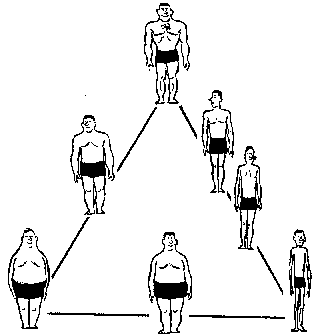 introverted sensation |
extraverted thinking extraverted introverted introverted |
Imposed on Sheldon's somatotype chart it looks like this:
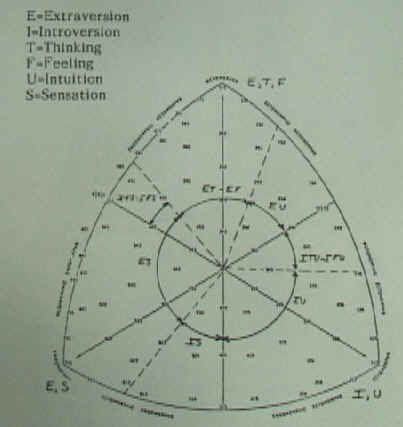
Fig. 2. Psychological Types of Male Somatotypes
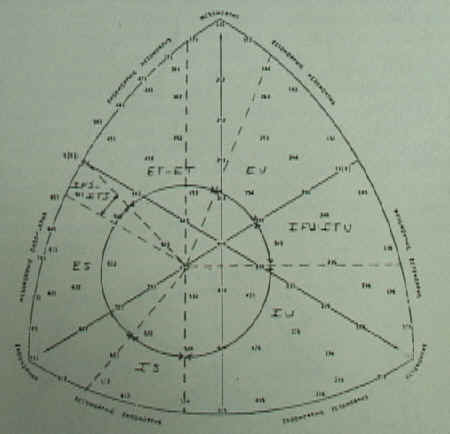
Fig. 3. Psychological Types of Female Somatotypes
Keeping in mind that each psychological type covers a whole somatotype area, the following pictures from the Atlas of Men illustrate just one possible somatotype for each psychological type.
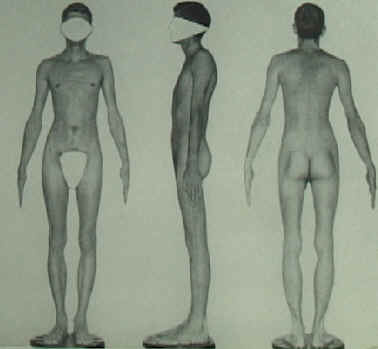
Introverted Intuition Type (126)
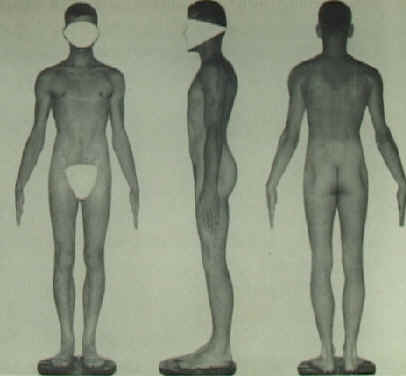
Introverted Thinking Intuition Type (244)
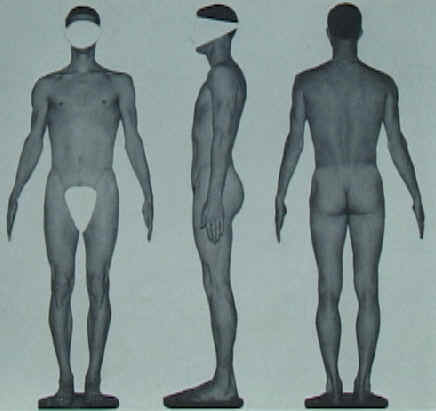
Extraverted Intuition Type (254)
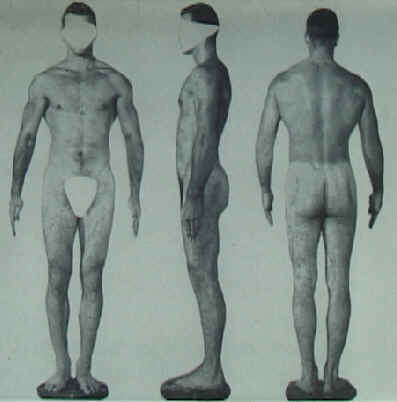
Extraverted Thinking Type (163)
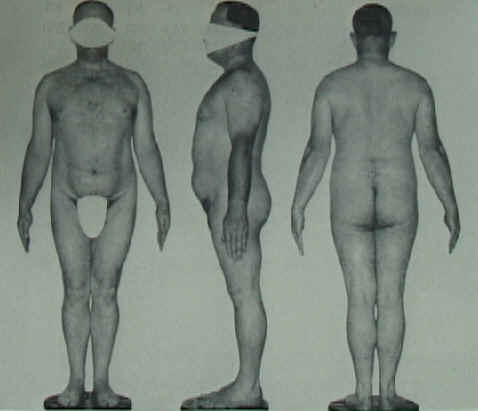
The extraverted sensation thinking type,
extraverted thinking sensation type or
introverted thinking sensation type
are all in this general area. (452)
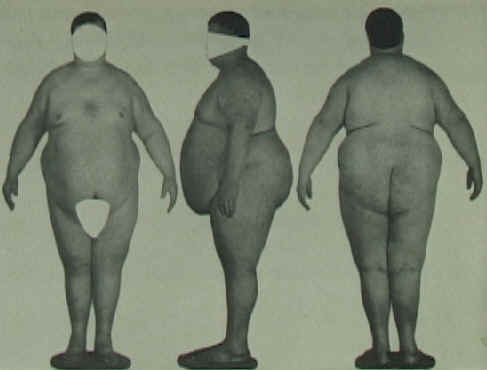
Extraverted Sensation Type (721)

Introverted Sensation Type (534)
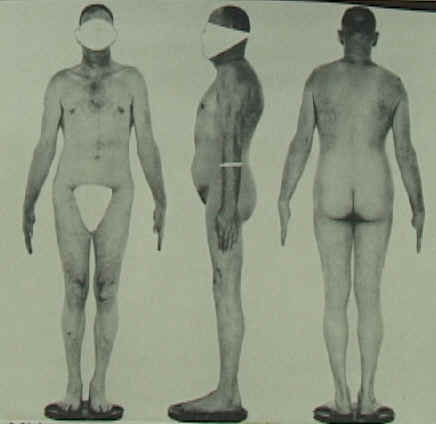
Midrange - small somatotype changes
lead to different psychological types (444)
Psyches are not disconnected from bodies, or randomly placed in them, but rather we are body and psyche, and they are intimately united and interacting. Let's take a few steps on the road to objectification by looking at data that already exists. Sheldon provides in the Atlas of Men a breakdown of three populations by somatotypes: 4,000 college men, 4,000 college women and 46,000 American males. We can convert these sample to psychological types by applying our somatotype-psychological type relationship, and then compare the results of the various MBTI samples.
The samples for 4,000 college men and 4,000 college women are summarized in the form of two somatotype charts in the Atlas of Men. After superimposing the somatotype-psychological type relationship on the charts, we counted the dots that fell in each area, and then arrived at the percentage figure for each psychological type. Because of the difference in men and women somatotypes, we have used Parnell's method (1958) of shifting the center of gravity of the women's somatotype chart to the southwest, to the 4-3-3.
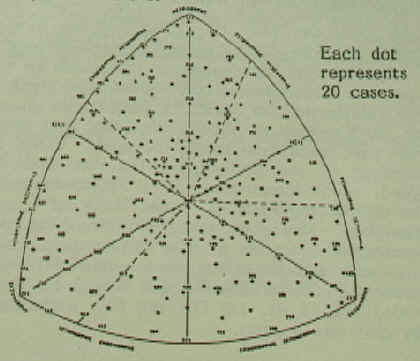
Fig. 4. 4,000 College Men and Psychological Types

Fig. 5. 4,000 College Women and Psychological Types
For the sample of 46,000 American men which is tabulated by incidence per thousand by somatotypes, we superimposed the somatotype-psychological type relationship on Sheldon's somatotype chart (Figure 10, Varieties of Human Physique) that shows the area that each somatotype occupied, based on the incidence of the somatotype. On this basis we assigned each somatotype to a psychological type. Where the psychological type line cut through a somatotype area, we assigned half value of that somatotype to each of the adjoining psychological types with the following exceptions: 4-4-3 and 4-4-2 divided 2/3 ES vs. 1/3 ITS and IFS; 5-4-1 and 5-4-2 divided 2/3 ES vs. 1/3 ITS and IFS; while the 4-4-4 was split into 8 parts.
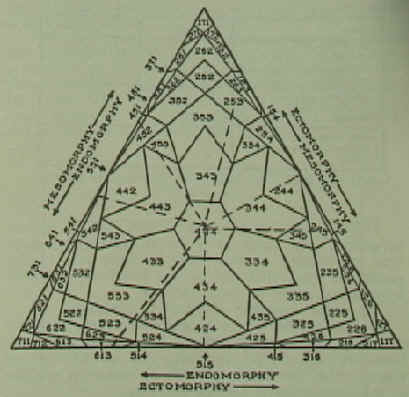
Fig. 6. Somatotype Territory and Psychological Type Territory
The MBTI data comes from Myers (1962) and Myers and Myers (1980). We chose the 3,503 high school students, college prep, a common basic sample used in MBTI comparisons, and two other samples to form a rough match with Sheldon's college men and women.
Sample |
Introversion |
Extraversion |
| 46,000 American males (Sheldon) 3.503 high school college prep males (MBTI) |
38.7 38.5 |
63.0 61.5 |
| 4,000 college men (Sheldon) 3,676 liberal arts college males (MBTI) |
41.5 45.7 |
57.0 54.3 |
| 4,000 college women (Sheldon) 240 Pembroke college women (MBTI) |
50.1 42.3 |
50.1 58.0 |
Table 1. Percentage of Introversion and
Extraversion by MBTI and Somatotype
The convergence of these results can be viewed as evidence in favor of a somatotype-psychological type relationship. It also could be seen as a confirmation of the reliability of the MBTI extraversion-introversion scores on large samples.
There are a number of points to consider:
1. The samples are only a rough match. It would be better to have a sample for American women from the somatotype direction, and adult men and women from the MBTI, as well as matching samples of the same kinds of college students.
2. Both sets of samples share a trend towards introversion in the college sample.
3. From a theoretical point of view the introversion-extraversion scores of the MBTI probably possess a higher degree of accuracy than the other scores. This is simply because introversion-extraversion is easier to measure. The introversion-extraversion scores by somatotype will also tend to be more accurate because they involve only a few divisions of the whole sample.
4. The problems of whether to somatotype women in the same fashion as men, and where the division lines between the types should fall, make more detailed comparisons difficult. Further, the MBTI scoring of women and men in thinking and feeling could probably be refined.
A further analysis of the 3,503 males from MBTI and Sheldon's 46,000 males by specific type, though premature, is nonetheless interesting. The most prevalent type in each case is the ET-EF type (32.3 MBTI and 27.7 Sheldon). Table 2 shows the eight types compared by percentage of type in the MBTI sample and the Sheldon sample.
Type |
Sheldon |
MBTI |
| ET-EF | 27.8 | 32.3 |
| ES | 20.2 | 14.2 |
| IU | 19.1 | 6.8 |
| EU | 15.1 | 15.0 |
| IT-IF | 14.5 | 19.7 |
| IS | 5.1 | 12.1 |
Table 2. Percentage of Type by MBTI and Somatotype
The greatest discrepancy exists between the IS and the IU types. This problem will reappear later when we examine the psychological type of schizophrenics; both from the point of view of the MBTI and from somatotypes. One possibility is that the IS territory should be expanded to embrace part of the IU territory and part of the ES territory. This would lower the figures for the ES and IU Sheldon figures and bring them more in line with the MBTI data. The other possibility is that the MBTI figures are weighted in favor of the IS, or finally, a combination of both reasons is at the bottom of these discrepancies.
If we make the assumption that the MBTI results, while being more accurate in determining the predominant components, will be less accurate in determining which function is the primary function and which is the auxiliary, we can group the MBTI results according to the following categories: ETS (EFS) and EST (ESF); ETU (EFU) and EUT (EUF); IST (ISF) and ITS (IFS); IUT (IUF) and ITU (IFU), thus combining the functions into groups most likely to be mistaken for each other. These groupings can be compared by MBTI and somatotype.
Type |
Sheldon |
MBTI |
| ETS-EST | 36.3 |
36.3 |
| EUT-ETU | 26.8 |
25.2 |
| IST-ITS | 13.0 |
21.6 |
| IUT-ITU | 25.7 |
16.9 |
Table 3. Combination of Type MBT1 and Somatotype
Again the major discrepancy exists in the IS-IU area.
A Temperament-Psychological Type Experiment
There is one study that deserves our careful attention because it comes the closest to being the forerunner of the objective tests that may be undertaken in the future. In it Ralph Metzner administered the Eysenck Personality Inventory, the Gray-Wheelwright and the Cortés-Gatti Self-Description Temperament Quiz to a group of 60 men and 96 women who were attending a conference of the Association for Research and Enlightenment at Virginia Beach, Virginia. Though it is not a direct test of Sheldon's somatotypes, we have already seen the good correlations found by Cortés and Gatti between temperament and somatotype when employing their quiz. There was a strong correlation between the extraversion as measured by the Eysenck test and by the Gray-Wheelwright, and when the results between Eysenck's test and the temperament quiz were compared, Metzner found for both men and women "strong positive correlations between extraversion and somatotonia and negative ones between extraversion and cerebrotonia." (p. 345) Although this appears as part of the common ground long observed, it says something more. Eysenck's notion of mesomorphs was a statistical one halfway between the ectomorphs and endomorphs. Here the extraversion of the mesomorphs is clearly brought out, while at the same time the extraversion of the viscerotonics does not appear. Perhaps this is an indication of the two different kinds of extraversion that Sheldon described.
More interesting are the correlations that he found that have a bearing on the relationship between the Jungian functions and the Sheldonian components of temperament. In the male sample, he found a positive correlation between intuition and extraversion, and a negative one between sensation and extraversion. When he compared the functions tested by the Gray-Wheelwright with the three components of temperament, he found in the male sample a positive correlation between intuition and mesotonia and a negative correlation between intuition and ectotonia. He also found a negative correlation between sensation and mesotonia, and a positive one between sensation and ectotonia. There are two groupings: extraversion, intuition, mesotonia and a negative correlation to ectotonia forming the first, and introversion, sensation, ectotonia and a negative correlation to mesotonia forming the second.
What can we make of this? Since the Gray-Wheelwright has a forced choice format, the results can be viewed as two sides of the one type being measured at significant levels. The most logical choice is the extraverted intuition type, for it would not be surprising to find them in considerable numbers at the Association for Research and Enlightenment which deals with the work of the psychic Edgar Cayce. In the extraverted intuition type intuition will appear extraverted, as well as mesotonic, and opposed to the ectotonic introverted pole. The sensation of the extraverted intuition type will come out introverted, negatively related to the extraverted pole of mesotonia, but positively related to the introverted pole of ectotonia. If the author had plotted the results of the Gray-Wheelwright and the Cortés-Gatti quiz on Sheldon's somatotype chart, then we might pictorially begin to get a sense of what these underlying correlations mean. As it is, if you have trouble visualizing what these correlations mean, you should not feel bad. There was virtually no way in which an examination of the data analyzed in this way could provide any number of significant clues to the relationship between somatotypes and psychological types. It's not that the clues are not there, but it is critical to have some sense of what we are looking for in order to evaluate them properly. This is the dilemma that we have already seen in the many objective tests done of Sheldon's and Jung's work, and it will, no doubt, be the dilemma that will exist if anyone undertakes to determine the relationship between body and temperament and psychological type by purely objective means. I am not saying that this objective testing is not worth doing. It is very much worth doing. Someday if the proper circumstances present themselves we can already see an interesting way to do it. This would be to somatotype people by one of the objective methods, preferably Sheldon's Trunk Index method, then administer the Cortés-Gatti quiz, and a battery of psychological type tests. At the same time, on the observational level, these individuals should be tested using Sheldon's long method of determining temperament and the more laborious observational ways to determine psychological type. The analysis of the data from all these different directions will go, we believe, a long way into showing how closely these three levels of personality are related.
Gray, in a study we examined before, administered the Gray-Wheelwright test to 13 markedly obese people and 25 markedly lean ones. Among the obese he found that 85% were more extraverted than introverted, 69% were sensation types vs. intuitive types, and 68% feeling types more than thinking types. Thus, the predominant type was extraverted sensation, making a nice, independent, confirmation of our hypothesis that extraverted sensation predominates among endomorphs. Gray does not indicate whether the obese were women or men, and so it's hard to evaluate his findings of more feeling than thinking. Among the lean people he found 72% introversion, 71% sensation and 76% thinking, where we would have expected more intuitive types.
Finally, in a book entitled Types de Jung et Tempéraments Psychobiologiques Jean-Charles Gille-Maisani describes the temperaments discovered by the French psychologist Léone Bourdel. By studying the reactions of people to different kinds of music, she distinguished four kinds of temperament: the harmonic, the melodic, the rhythmic and the complex, all of which she found had ramifications far beyond the musical field. The melodic is characterized by social adaptability. He or she is an extravert, active and open, a person whose life is deeply affected by the circumstances of the moment. They love to live in large cities and are oriented to the rooms in their houses that have to do with social interaction. They love well-being, and can adapt themselves to all kinds of other people. Here we begin to recognize the face of our old friend, Sheldon's viscerotonic or endotonic temperament. The rhythmic temperament, in contrast, is more independent, less emotional, loves movement, has an objective judgment, and can tolerate a monotonous cuisine. If the melodic is drawn to the social professions and business, the rhythmic is found among military officers, police, executives and so forth. Here we find a temperament that closely resembles Sheldon's somatotonic or mesotonic. The third temperament, the harmonic, is an introvert, habitually reserved and even inhibited. "The harmonic is, more than the other temperaments, vulnerable to the environment, with which he would love to be in harmony but to which, in fact, he is rarely well adapted. Criticisms inhibit him, especially if he feels himself misunderstood, not loved." (p. 86) The harmonics have a tendency to prefer jobs in research. This, of course, matches Sheldon's cerebrotonic or ectotonic. The fourth temperament is a mixture of the three previous ones.
What is interesting about these temperamental descriptions, which were experimentally derived, are not only their confirmation of Sheldon's, but how Gille goes on to explore their relationship with the different blood groups and with different kinds of handwriting. And most importantly, in the process of doing so makes some comments about the relationship between these temperaments and Jung's types which he had examined in the first part of the book. Will these comments coincide with the relationship we are proposing between Sheldon's temperaments and Jung's types? The melodic is characterized as an extravert whose sentiment in the terms of Janet is not inferior, making us think of Sheldon's extraversion of affect. The melodic-rhythmic, that is, the melodic with secondary rhythmic development, is characterized by Gille as having sensation well developed. (p. 107) And this is the area we described as extraverted sensation thinking and extraverted sensation feeling. When it is a question of the rhythmic, Gille had stressed his well-developed action, but also his relative independence from his milieu and does not characterize him as either an introvert or an extravert, making us think of the independence that Gray subscribed to the thinking type and, sure enough, Gille relates this type to Jung's thinking type. When it is a question of the harmonic he says he finds all the Jungian types there, but the introverted intuition type is the most frequent. We will return to this interesting work in connection with blood types later on, but here it is important to note we have some more independent evidence that tends to anchor the three poles of Sheldon's somatotype chart in relationship to Jung's psychological types in the way we have proposed.
Indirect Comparisons
While it is true that direct comparisons between somatotype, temperament and psychological type will shed the most light on the relationships between them, indirect comparisons, created by comparing somatotype and psychological type to a common third thing, would also be interesting and worth doing. Indirect comparisons of this kind are difficult to do because of the difference in the samples that are available, and in the procedures used to gather them. In the following comparisons we have simply selected some highlights that agree with our overall relationship between somatotypes and psychological types. We have done this in order to encourage careful comparisons between these two areas.
1. Myers (1960) compared the MBTI and Strong Vocational Interest Blank scores of 727 male freshmen, while Parnell (1958) examined the somatotype and the choice of faculty of 2,866 male freshmen upon entering Birmingham University (Great Britain). In the case of mathematics the MBTI results indicated a preference for introversion, intuition and thinking, while Parnell found the highest concentration of somatotypes in the endomorphic-ectomorphic range, which is the equivalent to our IU type. In the same way, in the interest of physics, Myers found the same type elements predominated, while Parnell found the highest concentration of somatotypes among the mesomorphic ectomorphs, which we are taking to be equivalent to the IU and IT types.
2. Deabler, Hartl and Willis (1975) somatotyped and gave the Strong Vocational Interest Blank to 300 male subjects. They found, for example, a significant correlation between psychology and ectomorphy. Myers, in the previously cited study, found a strong preference for the intuitive function among psychologists. Under the category of purchasing agent, Myers found the elements of extraversion, sensation and thinking predominating, while the Deabler study found a positive correlation with endomorphy.
3. In a comparison of MBTI scores with the Allport-Vernon-Lindzey Value Scores, Myers (1962) found a correlation between aesthetic interests and introversion and intuition. This fits very well with Sheldon's (1942) correlation of ectotonia and aesthetic intelligence. In the same way, Myers found a correlation between political interests and extraversion, sensation and thinking, while Sheldon in various places indicated the endomorphic mesomorphic build of political figures. The same type preferences, E, S, T, were found by Myers for economic interests, and these, too, fit Sheldon's comments about the endomorphic mesomorphic build of many businessmen.
4. Myers (1962) compared MBTI results with the Personality Research Inventory. She found that gregariousness was correlated with E, S, as was social know-how. Both traits are similar to qualities ascribed by Sheldon to the endotonic, which we have related to the ES personality. She also found a relationship between self-sufficiency and I, U, T, and between liking to use the mind and U, T. These findings are in line with Sheldon's traits of the ectotonic and our equation with the IU personality.
5. Myers (1962) compared the MBTI results with faculty ratings of student characteristics. She found traits like solitary related to introversion and intuition, and deep, shows originality, imaginative, all related to intuition, as well as good grasp of the abstract and independent. All these ectotonic traits could be applied to the range of psychological types running from the IU through the IT to the EU. The trait pleasant was related to extraversion, sensation and feeling, while the traits cooperative, poor at analyzing and willing to take directions were all correlated to sensation. These are all close to Sheldon's endotonic traits which we have related to the ES personality.
6. Myers (1962) found that the IU type had the highest mean I.Q.s and the highest mean grade point averages. This matches Sheldon's (1942) correlation of ectotonia and I.Q.. Parnell (1958) also found a relationship between academic performance and ectomorphy, which also fits in with our correlation between ectomorphy-ectotonia-IU. Both Sheldon and Parnell found that the 2-2-5 somatotype was the somatotype that most distinguished itself academically, and the 2-2-5 falls right in the middle of the territory we have delineated as that of the IU type.
Following the 2-2-5 somatotype in academic performance was the 5-2-3. If we look at the somatotype chart, this falls right near the IS, ES boundary. Myers found that the IST, along with the EUT, have the highest grade point averages after the IU types. Myers felt that the superior performance of the IU type could not be attributed to their higher I.Q. or application, but could be a habit of mind which produces a certain interest in academic kinds of activities. Sheldon, looking at the same issue from the perspective of somatotypes, felt that somatotypes like the 2-2-5 and the 5-2-3 did not have the distraction from academic pursuits because of their low mesomorphy. Both of these considerations seem roughly equivalent, and could form the starting point of a consideration of I.Q. differences among groups in virtue of the relative frequency of the different types within the groups.
7. Myers (1962) reported on a four-year study of employee turn-over by Laney where the turn-over rate of intuitive workers was much higher than that of sensing workers, especially in mechanical jobs. This can be compared with Parnell's report of a study of Bullen where among female factory workers who were engaged in piece-work stitching, the mesomorphic-endomorphic women lasted the longest. Linear women had a higher turn-over rate. These results are also consistent with our conversions of somatotype to psychological type.
These are not the only areas where comparisons might be fruitful. Sheldon describes a number of three-way traits which distinguish the three components of temperament. For example, in reaction to trouble, the endotonic needs and seeks out people, the mesotonic needs action, and the ectotonic solitude. Or in the case of alcohol, the endotonic becomes more relaxed and sociophilic, the mesotonic becomes more aggressive and assertive, and the ectotonic becomes more resistant to alcohol and depressed by it. Attitude towards death and privacy preferences can also be viewed as three-way temperamental traits. All of these traits could serve as common points of comparison for somat0type, temperament and psychological type evaluations.
Sheldon also made observations about the somatotype and temperament type of delinquent boys, temperamental susceptibility to hypnosis, and to heat and cold sensitivity, sleeping styles, space and housing preferences, and many other things. These could be compared to psychological type evaluations of the same traits. These kinds of comparisons will serve not only as further evidence for a relationship between the three levels of type, but also serve to clarify and delineate the interrelationships between these levels and help knit them together into one typological instrument with many possible applications.
Continuity and Discontinuity
Sheldon's somatotypes are described as an ever varying continuum while Jung's psychological types are distinct entities set off rather sharply from each other. These two modes of descriptions seem on the surface to be strongly opposed to each other and an obstacle to the integration of somatotypes, temperament and psychological types.
If discontinuity can be demonstrated underlying Sheldon's somatotypes, the problem will begin to resolve itself, and incidentally serve as another kind of evidence in favor of the relationship between the two typologies. The young men who were the subjects of Sheldon's Varieties of Delinquent Youth were strongly clustered in the endomorphic-mesomorphic northwest of the somatotype chart. If we study the capsule biographies of the majority of the men who were somatotyped 4-5-1 and 4-5.5-1 or 4-5-2 and 4-5.5-2, two distinct patterns emerge.
The first is a series of cases where mesomorphy has been rated at 5 and endomorphy at 4 or 4.5. The descriptions seem more appropriate for the ES than for the ET. For example, case 18, a 4.5-5-1.5, evokes the comments, "Although powerfully built, he can neither fight nor run, but he swims fairly well. He is emotionally extraverted, relaxed, gluttonous, also stubborn and surly. The youth has held a job for nearly a year, is fatter, seems more dull and bleary." Case 192, a 4-5-1.5, is described as: "sociable, happiest where the crowd is thickest and noisiest, enormous energy combined with a total absence of physical combativeness."
In the other series mesomorphy advances to a 5.5, while endomorphy remains at 4. These young men are described in quite a different way. Case 164, a 4-5.5-1.5, is seen as: "of tremendous energy, he seems to have a constant need for letting off steam in dangerous actions, his unlimited courage, directness, psychological callousness, and lack of restraint define extreme somatotonia (mesotonia)". And case 200, a 4-5.5-2, "a picture of relaxed, resourceful and aggressive somatotonia (mesotonia) without a smile. Behind the menace lies both physical power and a violent, destructive temper. He looks upon life through the eyes of a predator." Table 4 gives the somatotypes of these two series, and Figure 7 shows them represented on the somatotype chart.
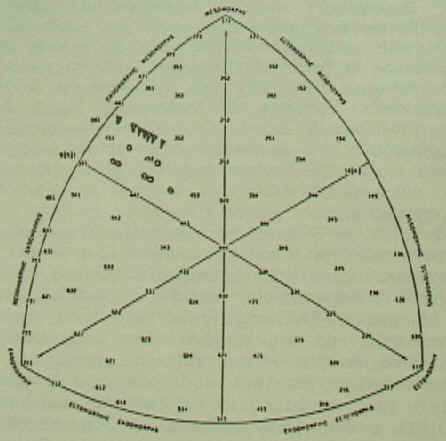
Fig. 7. VDY Cases
EST |
ETS |
||||
Case |
VDY |
VDY 30 |
Case |
VDY |
VDY 30 |
| 12 | 4 ½ 51 ½ | 451 ½ | 13 | 45 ½ 1 ½ | 45 ½ 1 ½ |
| 18 | 4 ½ 51 ½ | 55 ½ 1 | 90 | 45 ½ 1 ½ | 35 ½ 1 ½ |
| 23 | 452 | 64 ½ 2 | 118 | 45 ½ 1 ½ | 451 |
| 47 | 4 ½ 52 | 4 ½ 53 | 164 | 45 ½ 1 ½ | 45 ½ 2 |
| 120 | 4 ½ 52 ½ | 55 ½ 2 ½ | 193 | 45 ½ 1 ½ | 35 ½ 1 ½ |
| 172 | 4 ½ 52 | 44 ½ 3 ½ | 195 | 45 ½ 1 | 35 ½ 5 ½ 1 ½ |
| 192 | 451 ½ | 452 ½ | 200 | 45 ½ 2 | 2 ½ 62 ½ |
Table 4. Selected EST and ETS cases in VDY and VDY 30
If we avert simply to somatotype we would conclude that the underlying temperaments and psychological types would be quite close. The half point in mesomorphy should not have such an impact as to strongly differentiate these young men, yet a reading of the cases indicates that there are two distinct types involved. With the publication of Physique and Delinquent Behavior: A Thirty-Year Follow-Up of William H. Sheldon's Varieties of Delinquent Youth by Emil M. Hartl, Edward P. Monnelly and Roland D. Elderkin (1982) we were able to pursue this question further. The men were re-somatotyped by using Sheldon's Trunk Index method. If our original assumption was correct, the re-somatotyping to the degree it corrected the original somatotypes should show the cases we labeled ES moving towards the endomorphic pole, while the cases we labeled ET should move towards the mesomorphic pole. (See Figure 8)
This kind of discontinuity, which can also be seen in the Gabriel and Eugene cases in the Varieties of Temperament, cannot be explained adequately within the framework of somatotype alone. If we imagine a psychological type boundary running through the 4-5-1 - 4-5-2 area, then the divergence on either side becomes comprehensible.
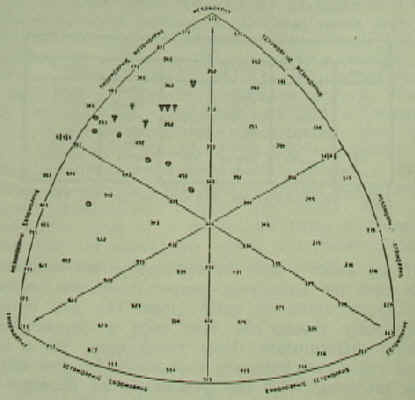
Fig. 8. VDY 30 Cases
An integrated typology could have a great effect on both Jung's and Sheldon's psychology. First let's look at its potential for effecting how we see psychological types.
1. It allows us to make a new attack on the intractable problem of diagnosis without being compelled to try to reformulate Jung's typology. Typological diagnosis, integrally considered at the three levels of type, instead of becoming a more complex procedure, is actually easier once the initial skills have been gained. What makes it easier is that a wider range of empirical material is available for observation. What is striking in one case may be absent in another, making set rules often difficult to follow. For example, an extreme ectomorphic physique is naturally more suggestive than when it is a question of a midrange somatotype. In other cases, temperamental traits might be in the forefront, like the booming voice of mesotonia or the special kind of amiability of the endotonic. At the level of psychological type, the inferior function might catch a person's attention, or the degree of introversion and extraversion, or even something subtler like the distinctive quality of thinking as a third function. Characteristics from all three levels give rise to particular lines of inquiry, and since there are more roads leading to the final diagnosis, it is often easier. The multiple directions of approach tend to check and confirm each other, yielding a greater certitude.
2. It makes us face the question of intratype variation at the level of the psychological type. If we look at the extent of the somatotype territory that each psychological type covers, we see graphically depicted the possibility that two people of the same type can differ considerably. This is something we may have instinctively realized before, but now we have a way to characterize it.
Is the 6-3-2 ES, for example, really the same as the 4-5-1 ES? And does this variation have something to do with the actual structuring of the functions with one another? Are people different, not only in attitude and function, but also in the internal configuration of the functions in terms of the distance of one function from another, that is, in terms of psychological accessibility? Is integration harder for some people than for others because of this kind of articulation? When seen in this light, Sheldon's remarks on the 4-4-4 temperament are potentially significant. These people exhibit a greater ability to develop in different directions, but do they also exhibit a higher degree of susceptibility to neurosis, i.e., the unwanted intrusion of unconscious material into consciousness? In the same way, does the extreme polar physique have more difficulty in integrating the auxiliary functions? Are some people naturally closer to their inferior function? Such questions, if they become answerable, could have an important effect on actual therapeutic practice and provide a way to differentiate what kinds of techniques to use in different cases.
3. The third possibility that this integration opens up for Jungian psychology is that Sheldon's constitutional psychology can form a bridge which allows Jung's work to be brought to bear in new areas. This is our task in Part IV.
Typing the Typologists
We have already seen that Sheldon was around 3 1/2 - 3 1/2 - 5 in somatotype and an introverted thinking intuition type. These evaluations agree with our determination of the somatotype area of the introverted thinking intuition type. Incidentally, for each somatotype in the Atlas of Men Sheldon named an animal totem, and for the 3-4-5 it was an Irish setter, which calls to mind his father's joke of William being the last of the litter. Sheldon remarks about this somatotype totem, "Bird dogs who are more ectomorphic than pointers. More fragile, more delicate boned. Higher spirited, keener nosed and more temperamental. Longer haired and less sturdy, they stand rough country poorly." (p. 159)
Sheldon left us approximate somatotype ratings for both Kretschmer and Jung. Kretschmer, who gives the impression in his writings of being a genial and sociable man, he rated 4.5-4-2.5, which would make him an extraverted sensation thinking type or an extraverted thinking sensation type.
But what of Jung? Jung thought of himself as an introverted thinking intuition type, and ever since the creation of psychological types many people have tried their hand at reevaluating Jung's type. Usually they want to stress his intuition or are impressed by the large measure of extraversion he seemed to possess. This is, of course, a somewhat speculative pastime, but as long as we don't take it too seriously, it can be fun. Jung had to be aware, at least from the publication of Kretschmer's Physique and Character, that the schizophrenic had been identified with Kretschmer's asthenic physique (or in Sheldon's terminology, the ectomorph), while he, himself, had previously associated schizophrenia with regressive introversion. It would have been natural, therefore, for him to see the connection between introversion and the ectomorphic physique. But Jung was highly introverted and not at all the typical ectomorph. He had been nicknamed by his school friends "the barrel", and the Indians at the Taos pueblo in New Mexico had thought that the bear was his appropriate totem. He impressed many of his visitors not only with his height, but with his burliness. Jung, himself, was aware of the apparent incongruity between his psychological type and his body type. Writing in 1929 to a woman who was attempting a portrait of him he says, "My exterior is in estranged contrast to my spirit. When I am dead no one will think that this is the corpse of one with spiritual aspirations. I am the clash of opposites." (Letters, Vol. 1, p. 51) Sheldon gave him the approximate somatotype of 4-6-2.5. Interestingly, Sheldon's totem for the 4-6-2 was the Great Alaska brown bear. This would make him either an extraverted thinking type (which I don't believe he was), or put him near the range we have described as belonging to those paradoxical introverted thinking sensation types who are more outwardly forceful than the usual run of introverts, but are introverted nonetheless. It would also make us wonder if the ITS territory goes closer to the mesomorphic pole than we had realized.
Van der Hoop in his Conscious Orientation does, indeed, suggest that Jung was an introverted thinker with sensation rather than intuition as his secondary function. He finds evidence in the fact that Jung "lives out of doors, travels a great deal, and welcomes all the pleasures of existence. In his scientific work, this factor leads to the exposition of much concrete detail." (p. 327)
He contrasts Jung with Kant as a typical introverted thinking type with intuition as the auxiliary function, and he recognizes that Jung diverges from what he feels is the "very practical and solid intellectuality" of the typical introverted thinking sensation type. Jung concerns himself with ultimate issues and van der Hoop surmises this represents the working of the polar aspects of his mind, that is, his compensating intuition and feeling.
Not only was Kant selected as an example of an introverted thinking type by Jung, but Kretschmer saw him as a schizothyme, and so we could say that he was a representative of the slim muscularity that we have come to recognize as one of the hallmarks of the introverted thinking intuition type, which does, indeed, contrast with Jung's body type.
After this chapter was completed I received some data through the good offices of Emil Hartl and Edward Monnelly that confirmed my instincts that proof of the somatotype - psychological type relationship by paper and pencil "objective" methods is not going to be a straightforward task. It consisted of 16 men and 6 women who had been somatotyped by Sheldon's objective method and who had taken, as well, the MBTI. In some of these cases we could perhaps find some support for our somatotype - psychological type relationship. For example, a man who was somatotype 4.5-3-5 predominated in introversion, sensation and thinking, making it conceivable he was an introverted sensation type. But in general no easily analyzable pattern emerged. What is happening? We could conclude that psychological types are more or less randomly connected to body types, but I don't think this is correct. The most probable source of error is in the establishment of the psychological type solely by means of a type test. Perhaps if this kind of somatotype - psychological type experiment were done on a large enough scale, some hint of these relationships would emerge through statistical analysis, but I would still like to see the kind of experiment described above in which more laborious, but I think more accurate methods would be used to determine the psychological type.